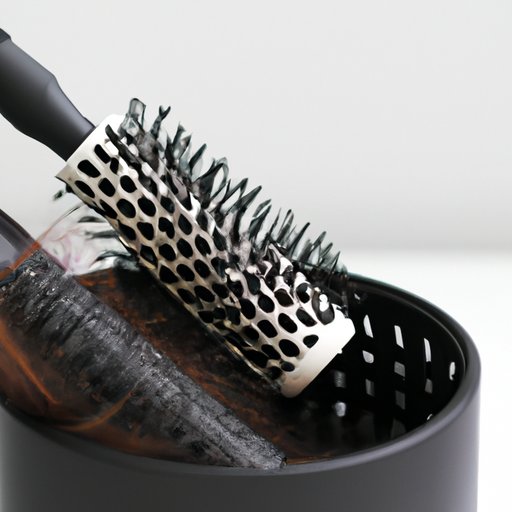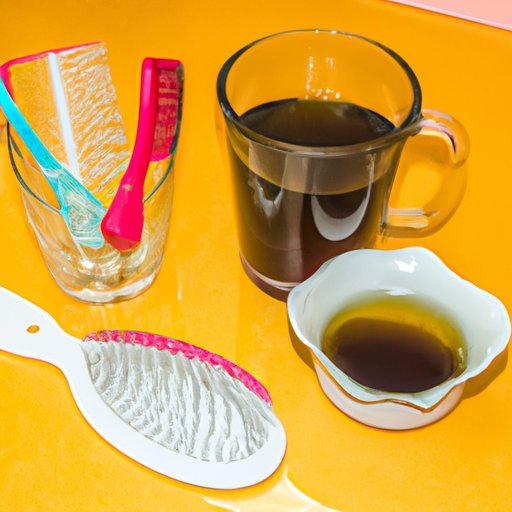I. Introduction
If you’re someone who invests time and money into maintaining healthy hair, it’s crucial to understand the importance of cleaning your hair brush regularly. Not only does it remove unwanted hair and debris from your brush, but it also helps maintain good hair and scalp health. In this article, we’ll provide you with several tips on how to clean your hair brush effectively and efficiently.
II. Start with the basics: How to remove the hair from your brush
The first step in cleaning your hair brush is to remove the excess hair from the bristles. To do this, you can use a comb or your fingers to gently pull the hair strands from the brush. It’s essential to do this step regularly to prevent excess build-up on your brush that can lead to bacteria growth, and even hair breakage.
III. Use a cleaning solution: How to make a DIY solution to clean your hair brush
After removing the excess hair, it’s time to deep-clean your brush. You can create a simple cleaning solution using household ingredients such as dish soap, warm water, and baking soda. Mix these ingredients in a bowl, and then dip your brush into the solution while moving it around to ensure all bristles are covered. After a few minutes, rinse the brush thoroughly with clean water, and let it air-dry.
IV. The toothbrush trick: How to use a toothbrush to clean your hair brush
If you’re struggling to remove certain debris or hair strands from hard-to-reach areas of your brush, it’s best to use a toothbrush. Gently scrub the toothbrush back and forth across the bristles to ensure every area is cleaned. However, take caution not to scrub too harshly, or you could damage your brush and bristles.
V. Deep-cleaning with baking soda: How to use baking soda to remove build-up from your hair brush
If your hair brush has severe build-up, it’s best to use baking soda as an abrasive to help remove it. Mix a tablespoon of baking soda with warm water to create a paste, apply this paste to the bristles of your brush, and use your fingers or a toothbrush to scrub the bristles. After thoroughly scrubbing the brush, rinse it off with warm water, and let it air-dry.
VI. Soak in vinegar: How to use vinegar to clean and sanitize your hair brush
Vinegar is a natural disinfectant and can be used to deep-clean and sanitize your hair brush. It’s simple to create a solution by mixing equal parts vinegar and water in a bowl. After removing the excess hair from your brush, soak the brush in the vinegar solution for thirty minutes to an hour. After soaking, rinse thoroughly with clean water and let your brush air-dry.
VII. Dry cleaning method: How to use dry cleaning to remove excess hair and debris from your brush
Despite taking regular care of your brush, you may still have leftover hair strands or debris. An easy way to remove them is through dry cleaning. Using a toothpick or a clean comb, run it through the bristles of your brush carefully. This motion will help release any hair strands or debris that might be stuck in it.

VIII. The final step: How to dry and store your hair brush after cleaning it
After cleaning your hair brush, it’s essential to give your brush time to air-dry completely. You can lay your brush flat on a clean towel or hang it bristle-side down to let it air out. Also, be sure to store your brush in a clean, dry place to prevent bacteria growth or damage.
IX. Conclusion
Cleaning your hair brush regularly is crucial to maintaining healthy hair and scalp health. Use the tips provided in this article to stay on top of hair brush maintenance and ensure that your brush remains clean and healthy. By following these simple cleaning steps, your hair will thank you for it.
